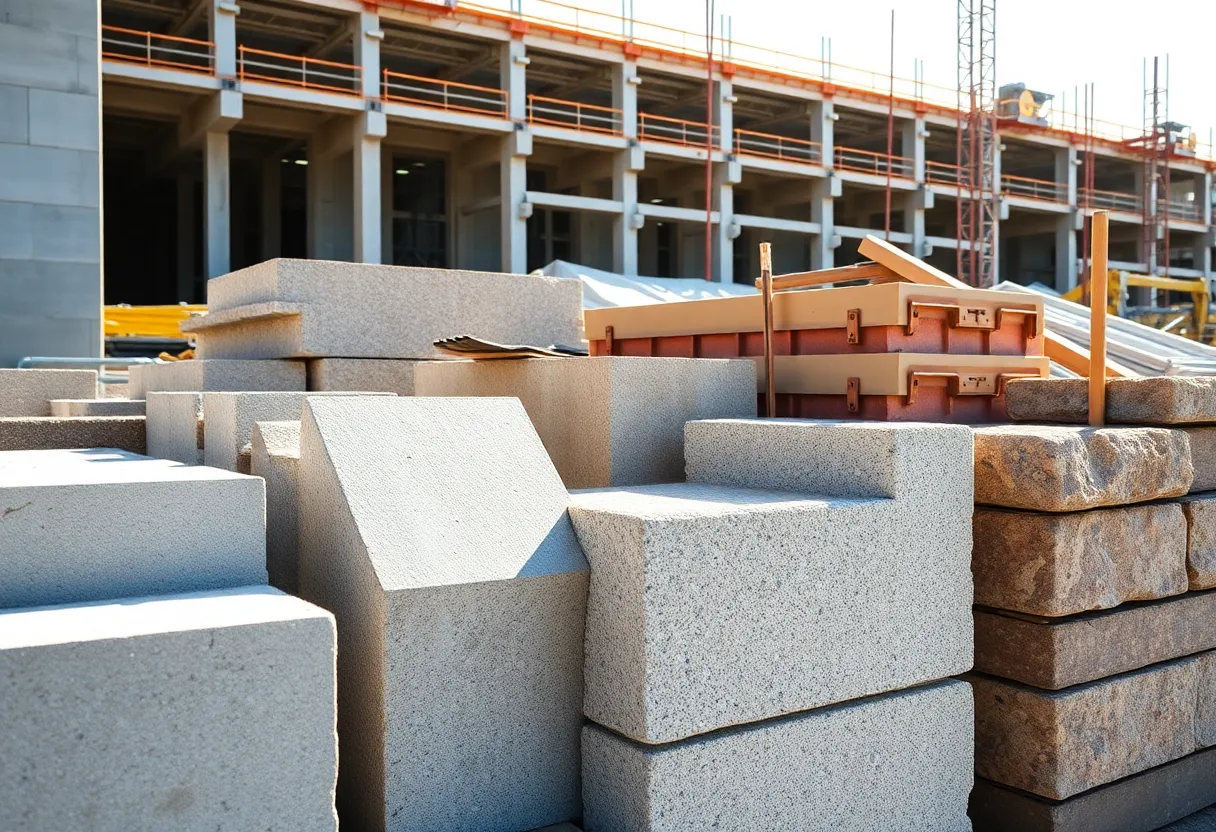News Summary
In response to recent wildfires, California has launched the ‘Building With Resilience’ initiative to promote non-combustible construction materials. This campaign aims to enhance fire safety in rebuilding efforts, encouraging the use of materials like concrete, masonry, and steel. By adopting these materials, the state hopes to improve structural durability and reduce insurance costs, supporting broader climate objectives. Experts emphasize the need for stringent fire-resilience standards in construction practices to protect properties and lives as California rebuilds after devastating fires.
California has initiated a new campaign named “Building With Resilience” to promote the use of non-combustible construction materials in the wake of devastating wildfires. This initiative addresses the pressing need for enhanced fire safety in rebuilding efforts following the January 2025 fires. By advocating for materials that resist flames, the campaign aims to increase structural durability, lower insurance costs, and support the state’s climate objectives.
The campaign is highlighting a variety of non-combustible materials available within California, including concrete, masonry, metal, stone, fiber-cement, and asphalt. These materials are instrumental in constructing buildings that are more resistant to fire, thus protecting both property and lives during wildfire events. The statistics from recent studies were pivotal in showcasing how non-combustible materials can significantly enhance a structure’s ability to withstand fire damage.
Experts in the field have underscored the crucial need for established standards regarding fire resilience in construction choices. This campaign aims to gather insights from industry experts to prioritize the adoption of fire-resistant materials that align with California’s extensive environmental and climate initiatives. As part of the rebuilding strategy, local infrastructure such as roads and water systems, essential during fire emergencies, is also expected to utilize fire-resistant construction methods.
Organizations involved in the campaign stress the imperative of constructing safer structures that do not give in to burning, rotting, or rusting. Studies conducted by the Insurance Institute for Business and Home Safety on buildings affected by the recent wildfires in California provide compelling evidence that non-combustible materials play a pivotal role in reducing total losses during fire events. The data revealed that the proximity between structures along with the use of fire-resistant materials significantly influences a building’s ability to endure wildfires.
The construction of noncombustible homes, such as those developed by PHNX Development using concrete and steel, marks a shift away from traditional wood materials, effectively enhancing fire safety. These homes feature Insulated Concrete Forms (ICF) and are engineered to endure extreme fires while minimizing structural damage, showcasing an innovative approach in housing design.
In a further incentive, insurance companies like Mercury Insurance are now offering discounts for homeowners who choose to build with non-combustible materials, showing potential savings of up to 45% compared to traditional coverage. As awareness grows, architects are increasingly focusing on creating fire-resistant designs that prioritize safety over aesthetic appeal.
The campaign also emphasizes the importance of defensible space landscaping techniques aimed at protecting homes from wildfires. Measures such as creating zones free of combustible materials can significantly enhance fire safety. The use of fire-rated materials, which can withstand flames for extended durations, is becoming more common and crucial in areas prone to wildfires.
Many homes destroyed in the recent wildfires were built prior to California’s more rigorous building codes that account for wildfire risks, often using materials that lacked resilience. The need for increased community awareness and policy support is vital as California endeavors to rebuild and strengthen fire-resistant measures in vulnerable regions. The collaborative efforts of lawmakers, community members, and construction experts through the “Building With Resilience” campaign highlight an urgent response to the climate challenges and natural disasters facing the state.
Deeper Dive: News & Info About This Topic
- Business Wire: Building With Resilience
- DWM Magazine: Role of Glass in Fire Prevention
- ABC30: California Insurance Crisis
- Fast Company: Fire-Resistant House Design
- Firehouse: Fire Protection Measures
- Wikipedia: Wildfire
- Google Search: Fire Resistant Construction
- Google Scholar: Fire Resistant Building Materials
- Encyclopedia Britannica: Fire
- Google News: California Wildfires 2025

Author: STAFF HERE SAN DIEGO WRITER
The SAN DIEGO STAFF WRITER represents the experienced team at HERESanDiego.com, your go-to source for actionable local news and information in San Diego, San Diego County, and beyond. Specializing in "news you can use," we cover essential topics like product reviews for personal and business needs, local business directories, politics, real estate trends, neighborhood insights, and state news affecting the area—with deep expertise drawn from years of dedicated reporting and strong community input, including local press releases and business updates. We deliver top reporting on high-value events such as Comic-Con International, San Diego County Fair, and San Diego Pride Festival. Our coverage extends to key organizations like the San Diego Regional Chamber of Commerce and United Way of San Diego County, plus leading businesses in biotechnology, healthcare, and technology that power the local economy such as Qualcomm, Illumina, and Scripps Health. As part of the broader HERE network, including HEREAnaheim.com, HEREBeverlyHills.com, HERECostaMesa.com, HERECoronado.com, HEREHollywood.com, HEREHuntingtonBeach.com, HERELongBeach.com, HERELosAngeles.com, HEREMissionViejo.com, and HERESantaAna.com, we provide comprehensive, credible insights into California's dynamic landscape.





